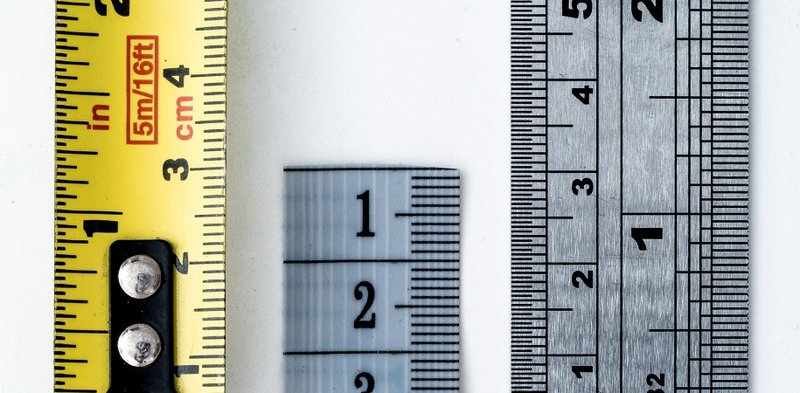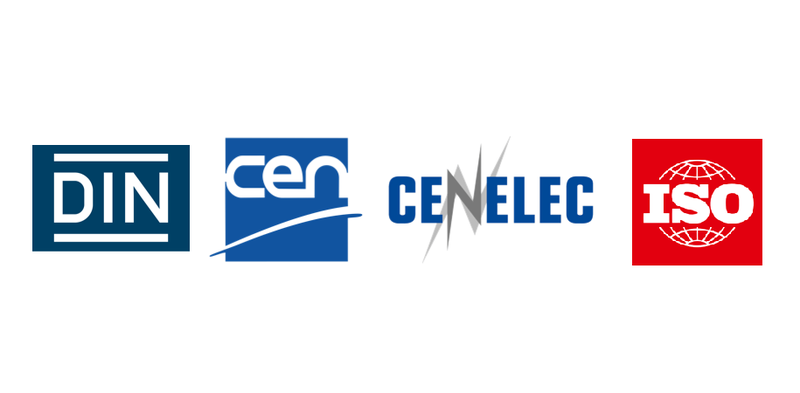
Standards simply explained
Whether DIN, ISO, CEN, or HTML: standards are omnipresent in both private and business life. In this article, we explain what is behind them and which standards you should know.
In international trade, common standards allow the free trade of goods and services without additional adaptation costs. Standards can be seen as a common language for test orders, which helps clients of industrial tests and test laboratories to make sure that both parties are clear on how a test is to be performed correctly. This eliminates the need for discussion about whether the other side knows exactly what should be done. In the environment of industrial inspections and tests, standards are therefore absolutely indispensable.
In the following, we would like to give an overview of the world of standards and explain the subject of standardization in a comprehensible way.
What is a standard?
A standard formulates requirements for products, services, or processes. In this way, it creates clarity about properties, ensures quality, and guarantees safety. But what do terms such as DIN, ISO, and EN mean? What are the similarities and differences?

DIN as a German standard
- The DIN standard stands for a German standard. This can refer to both tangible and intangible objects and is published by the German Institute for Standardization.
- Before a standard is created, there must be an interest of several concerned parties to agree on one or more standards. Even as a private person, one can draft an informal letter to DIN to request a standard.
- The totality of all standards is referred to as the German body of standards.
EN as a European standard
- EN stands for "European Standard" and refers to a standard that has been ratified by one of the three European committees for standardization - European Committee for Standardization (CEN), European Committee for Electrotechnical Standardization (CENELEC), and European Telecommunications Standards Institute (ETSI).
- All EN standards are created through a public standardization process.
ISO as an international standard
- An ISO standard is used for worldwide standardization in comparison to a DIN or EN standard. ISO stands for International Organization for Standardization.
- In the meantime, more than 160 countries are represented in ISO, and a standard is created, similar to Germany when there is both an interest and a good justification.
- Rather than being specific to one country, an ISO standard applies to every member country.
Especially international standards are of great use for the industry to be able to produce components, products, food, and clothing in the same way without encountering problems due to different standardizations in different countries. Furthermore, there is a smooth transition of standards between countries: for example, an ISO standard can be directly transferred to EN, and then submitted to DIN as a proposal for a German standard, which can result in parallels in the standards.
Designations explained:
- DIN: (e.g. DIN 33430) is a DIN standard that has predominantly national significance
- DIN EN: (e.g. DIN EN 14719) is the German adoption of a European standard. European standards, if adopted, must be adopted unchanged by the members of CEN and CENELEC.
- DIN EN ISO: (e.g. DIN EN ISO 9921) is the German adoption of a standard developed under the auspices of ISO or CEN and then published by both organizations.
- DIN ISO: (e.g. DIN ISO 10002) is an unchanged German adoption of an ISO standard.
Furthermore, additional information is often entered in the designation to refer to a special part of a standard. A part of a standard is noted with a hyphen (part 3 of DIN EN 3 as DIN EN 3-3). The issue date of the version is noted after a colon, for example in DIN 1301-1:2002-10, which designates the first part of the standard DIN 1301 and was published in October 2002.
Special cases explained:
- DIN IEC: (e.g. DIN IEC 60912) Unchanged German adoption of an IEC standard.
- DIN CEN/TS or DIN CLC/TS: (e.g. DIN CLC/TS 50459-1) Unchanged German adoption of a European Technical Specification.
- DIN CWA: (e.g. DIN CWA 14248) Unchanged German adoption of a CEN or CENELEC Workshop Agreement (Technical Rule).
- DIN VDE: Topics in electrical engineering, electronics, and information technology are dealt with jointly by DIN and VDE through the DKE. See the list of DIN VDE standards.
- DIN SPEC: Development of specifications: no involvement of all interested parties and therefore much faster than standardization.
testxchange is a marketplace for test orders for industrial tests, which significantly improves efficiency and quality in the awarding of test orders, both for clients and for test laboratories. An essential part of the test order process is that all parties involved are aware of the standards to be tested - this allows the right test lab to be found and requested as quickly as possible. Buyers benefit from our intelligent ways of finding the right test lab, depending on the applicable standard.